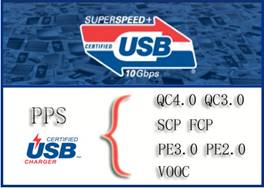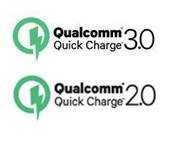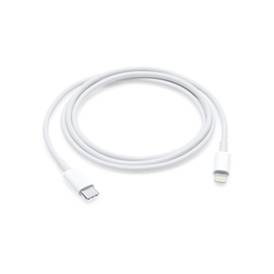USB PD3.0 hugh surprising upgrade, PPS incorporated QC4.0

Figure 1 based on USB PD 3.0 PPS technical specifications
During the Chinese New Year, the USB-IF organization released the important update of USB PD 3.0, formally launched the PPS (Programmable Power Supply), which was designed to unify the fast charging technology specification, successfully incorporated QUALCOMM's QC4.0, Thiel laboratory reached a consensus, is expected to achieve unity with the national standard. At this point, 2016 turbulent fast charging standard dispute come to an end, will be in 2017 into a unified standard, rapid development of the road. Industry players will also soon launch chips and solutions that support PPS technology.As PPS is actually a subset of AnyWatt programmable power technology, so support AnyWatt programmable power supply technology LDR6022 chip (data download) will be completed in March 2017 to upgrade the PPS support, is expected to become the world's first to support USB PD3 .0 and PPS chips.And consumers, can finally look forward to beginning in 2017 to enjoy the convenience of the great unity of the adapter. In order to give you a quicker understanding of PPS, this article will briefly introduce the magic of PPS technology architecture. As well as other important PD3.0 upgrade. Of course, purely personal interpretation, fallacy is inevitable, for reference only, there are corrective comments welcome to add my WeChat 13510191269.
First, USB-IF Why launch PPS?
In 2014, the smart phone into the big-screen era, the original 5V2A micro usb charging limit has been unable to meet the needs of users. However, USB-IF, the USB protocol maker, does not provide a solution. This was the standard for rapid charging technology standard melee foreshadowed. As a result, Qualcomm use their industry position, began pushing QC2.0 and QC3.0, to 9V / 2A, 12V / 1.5A rapid charging technology road embarked. However, unlike non-profit organizations targeting USB-IF, Qualcomm released technical standards are based on their own product ecological and commercial interests to start. Therefore, the dispute is unavoidable, war ignited. OPPO, MTK, Huawei, TI and other companies have launched their own fast charging standards, trying to get a share.

Figure 2 Qualcomm's QC certification mark
This situation is that no one wants to see, after all, a waste of social resources, resulting in e-waste pollution, contrary to the social responsibility of these large companies. So who will end the dispute? Must be to an organization without its own commercial interests to achieve. As a result, USB-IF in the original USB PD2.0 and USB PD3.0 basis, through and Qualcomm, Tal Laboratories and the domestic mainstream mobile phone manufacturers to communicate. And finally introduced the PPS to meet the demands of the parties (or compromise), and clearly stipulates that the USB interface does not allow non-USB PD protocol to achieve voltage adjustment. Since then, the rapid charging standards, is expected to move toward unity. Each of the original old standards, as long as they do not violate the principle, can be maintained on the basis of PPS downward compatibility. Then there are rebel, it is by its own to face some of the social responsibility.

Figure 3 Apple's C to Lightning cable
Here, we will be curious, Apple will become independent of the alliance outside the tribe. From the author's point of view will not, because Apple has launched a PD to Lightning adapter cable, in the 12-inch IPAD on the USB PD fast charge. Whether to apply this technology to Iphone, just Apple's preferences. As USB TYPE-C and USB PD to promote the vanguard, I believe that APPLE is just waiting for the opportunity.
Second, PPS can solve what problem?
1. PPS to USB interface, the output voltage range, extended from 5V to 3.0V ~ 21V.
This is a very important change, because the fast charge there is a high-voltage low-current and low-voltage high-current factions. From 3.0V ~ 21V power supply range, so that PPS can meet a variety of technical schools fast charging.
2. PPS adjustable voltage amplitude of 20mV, can achieve low-voltage high-current direct charge.
20mV a file voltage adjustment range, so that low-voltage high-current direct charge way possible, in fact, a lot of controversy on this technology, because some mobile phone manufacturers want to directly in the adapter to achieve constant current charge control, rather than on the phone end. But USB-IF did not agree with this. The main consideration is that the constant current mechanism may lead to some cases, the output voltage of the violent fluctuations is not conducive to the internal Bypass path management, and cell phone baseband module power supply security.
3. PPS has a pulsating mechanism to ensure the safety of the charging process.
PPS once into the high current mode, security becomes very important, so the PPS protocol, at least every 10S, the load and the adapter to maintain a pulse between the communication, to avoid charging process out of control.
Third, PPS is all right?
PPS from the current architecture, for mobile phone charging provides a very good solution. However, through the previous analysis we know. It is a USB PD protocol upgrade patch, a multi-wrestling results. The USB PD, should be concerned about the Power Deliver, not just charging. Since it is powered, it should include three common power supply, constant voltage, constant current, constant power. PPS only to achieve a constant voltage power supply, there are still limitations. In fact, before the introduction of PPS, some of the industry's more cutting-edge companies have been trying to publish better than the PPS, the same is based on USB PD power supply method. For example, the free protocol AnyWatt programmable power supply technology, you can achieve 3V ~ 20V range, constant voltage, constant current, constant power arbitrary adjustable way. Has made a very good commercial value, of course, PPS released, AnyWatt is naturally compatible with the PPS, so PPS AnyWatt programmable power supply technology has become a subset.
In addition to PPS, the USB PD3.0 upgrade also includes a lot of IEEE-related information (USB PD has been a little over the bounds, the tube to the field of the IEEE, it is necessary to follow the IEEE standard), including the Country Code, Country Information message, Manufacturer Information Message, etc. This information can help to deal with EMI and EMC processing for different countries' characteristics, such as notch filter characteristic frequency setting. The most important to the author, in addition to PPS, in fact, Status Message, used to mark the system currently has an external power supply, AC or DC access, battery conditions, operating temperature and so on. This feature will increase the power supply for the USB PD as an important standard to provide support, such as two notebook computers connected to the solution, who to whom the charge, the backup battery connected to the laptop, who to whom the charge Problems, power supply in the intelligent power supply network and load balancing issues.

Figure 4 based on USB PD and AnyWatt technology, intelligent power supply network
It can be said that the USB PD 3.0 update is exciting, is a real sense of growth. To tell the truth, I see the last version of the USD PD 3.0 is very disappointing, and even upgrade the product to USB PD 3.0 power is not (please refer to upgrade or trick? From USB PD 2.0 to USB PD 3.0). But this time different, we will be the fastest speed, the technology and products to upgrade to USB PD 3.0, click to download PPS chip LDR6022 chip information.

